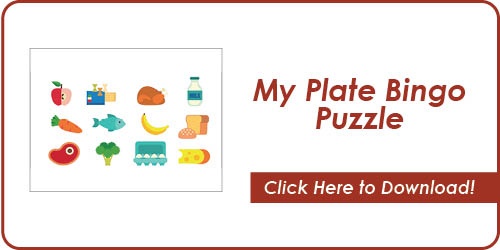 National Nutrition Month® is a nutrition education, and information campaign celebrated every March by the Academy of Nutrition and Dietetics. You can significantly impact your overall health by making small changes in your eating and physical activity routine. This year’s theme is “Personalize Your Plate." Since there is no one-size-fits-all approach, a Registered Dietitian can tailor the right healthful eating plan just for you!
National Nutrition Month® is a nutrition education, and information campaign celebrated every March by the Academy of Nutrition and Dietetics. You can significantly impact your overall health by making small changes in your eating and physical activity routine. This year’s theme is “Personalize Your Plate." Since there is no one-size-fits-all approach, a Registered Dietitian can tailor the right healthful eating plan just for you!
Here area few ways to help you get started:
- Cook and Prep – Learn skills to create tasty meals to share and enjoy
- Meal Planning – Enjoy healthful eating at school, work, and home
- Vary Your Diet – Eat a variety of nutritious foods every day
Here are some tips for incorporating healthy eating into your lifestyle:
Eat More Veggies
Veggies add color, flavor, texture, plus vitamins, minerals, and fiber to your plate. Make two ½ cups of vegetables your daily goal. Including vegetables in your breakfast is a great way to increase your intake. Add spinach, broccoli, squash, or tomatoes to scrambled eggs or omelets. Try a breakfast salad (yes, this is a thing!) Start with a bed of greens, chopped tomatoes, and bacon. Top it off with soft or hardboiled eggs. Add veggies to your favorite pizza or sandwich for lunch or dinner--top a baked potato with salsa.
Sneak Physical Activity into Your Day
Becoming more physically active does not require a gym membership. Increase your activity with some small changes. Stand up during conference calls. Standing increases your heart rate and helps you burn more calories than sitting. During commercial breaks, do planks, body squats, and leg lifts. Play outside with your kids or grandkids, sit on a stability ball, or take a long walk with your dog!
Quench Your Thirst
Your body needs water for healthy kidneys, transporting nutrients, energizing muscles, and normal bowel function. Your body loses large amounts of water every day, so you need to replace it for good health. Not a fan of plain water? Try adding fresh fruits, veggie slices, and herbs to flavor your water. Lime and ginger or strawberry and basil are great combinations. Eat foods with high water content like watermelon, citrus fruits, or cucumbers. Try sparkling or mineral water. Drink herbal tea.
Nosh on Healthy Snacks
Snacks can help you maintain your energy levels between meals. Pair a protein food with a grain, fruit, or veggie for a healthy snack. Raw vegetables with string cheese, whole-grain cereal with milk, apples with nut butter, or half a tuna sandwich are a few quick, easy, and nutritious snacks.
Cut Back on Added Sugars
High added sugar intake is linked to obesity, Type 2 diabetes, heart disease, and other chronic health conditions. Plus, they don’t contain any nutrients – just empty calories. Nutrition Facts labels on packaged foods include the amount of sugars added in processing the item, so be sure to compare nutrition labels before purchasing. An easy way to reduce added sugars is to buy foods without sugar and sweeten them yourself. For example, add fruit or honey to plain yogurt or unsweetened cereal. Buy fruits canned in natural juices instead of syrup. And limit sweetened beverages such as sodas as much as possible.
Need More Help Eating Right?
For healthy meals that are perfectly portioned, nutrient-dense, and ready to go when you need them, try a home-delivered meal service. Many health plans, including Medicare Advantage, offer home-delivered meals as a benefit. Check with your plan to see if you, or a loved one, is eligible!
Download the My Plate Bingo puzzle for a fun activity!










